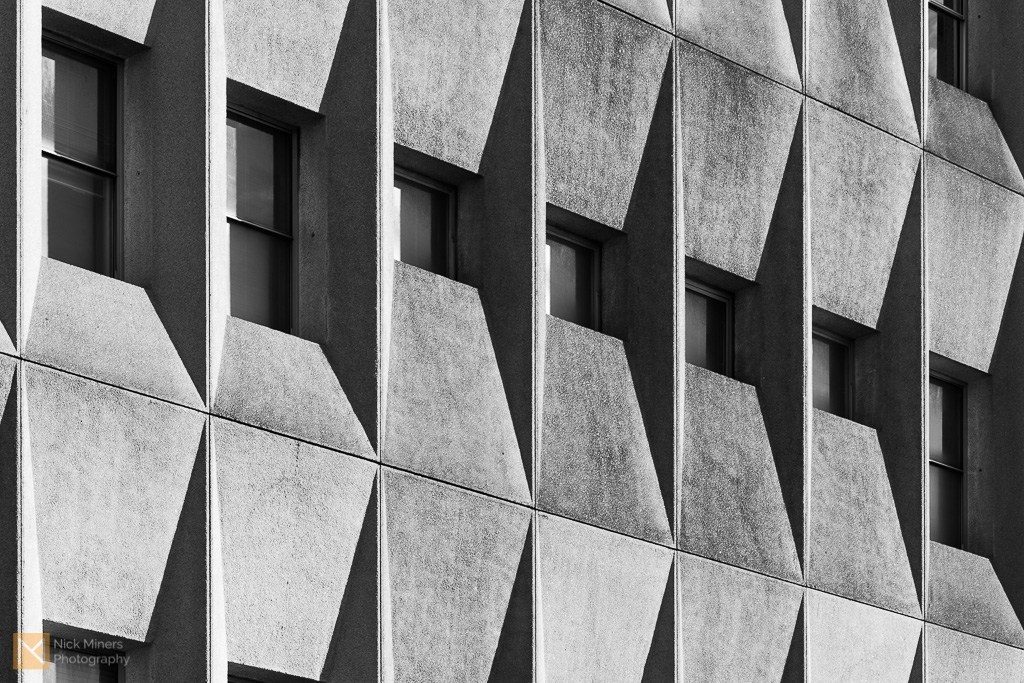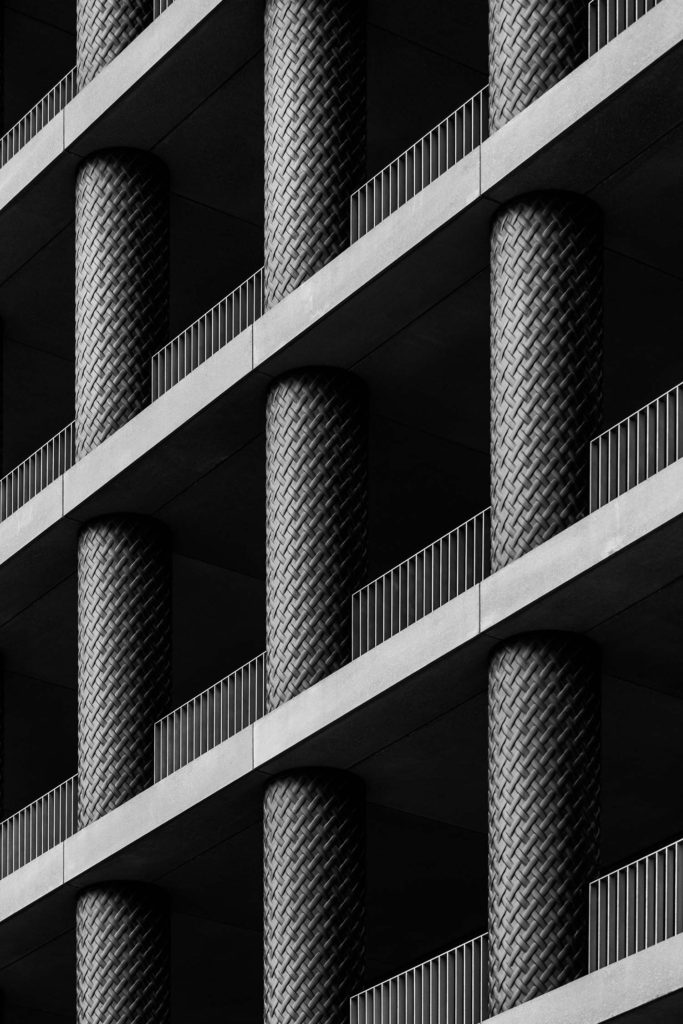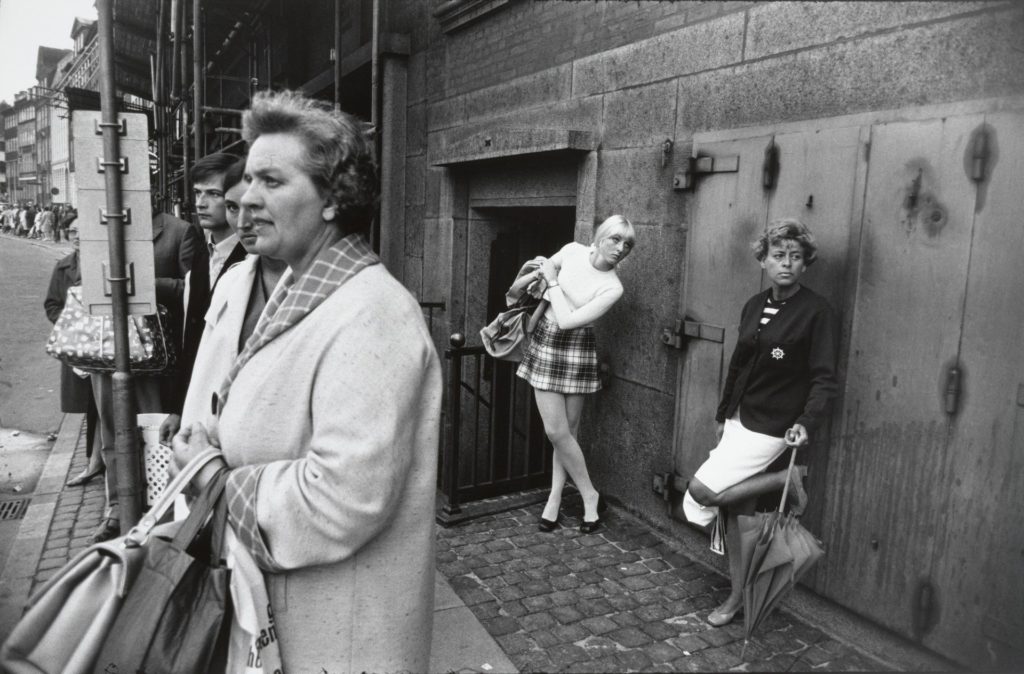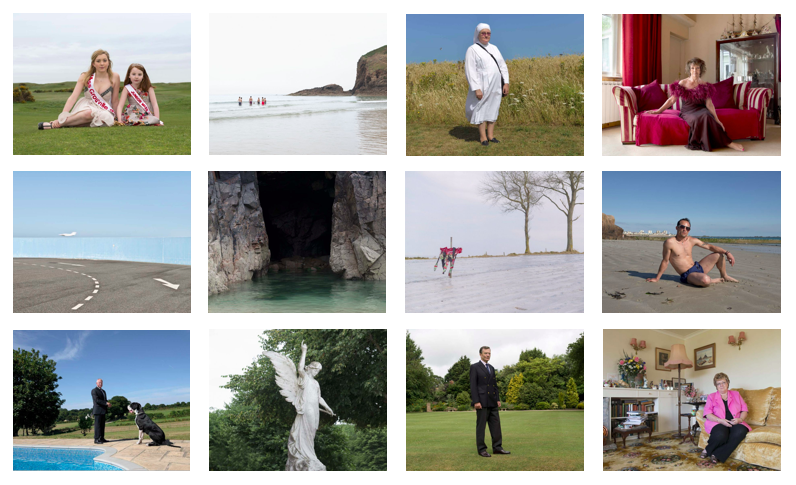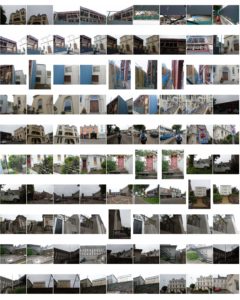
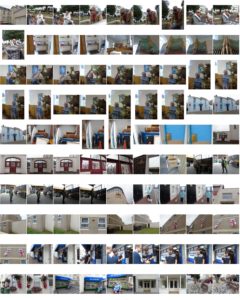
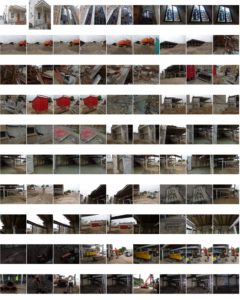
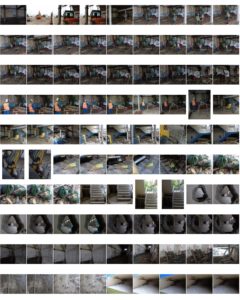
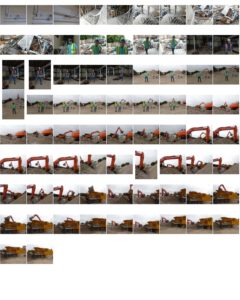
Category Archives: Uncategorized
Filters
Artist Research
Nick Miners
Nick Miners is an architecture and interiors photographer based between Bath and London. He is inspired about architecture and interior design and has a particular interest for brutalism and the work of Le Corbusier, Denys Lasdun and Ernő Goldfinger. He loves to to explore interesting buildings in his photography whether they are still being dusted off or have been standing for centuries. He has photographed buildings as old as the 16th Century Packwood House in Warwickshire, and as recent as 30 St Mary Axe, more commonly known as The Gherkin in London. Miners manages to capture the essence of a building in a seemingly abstract way, turning concrete monsters into beautifully abstract shapes, patterns and textures.
Artist research
Garry Winogrand
Garry Winogrand was born in 1928, he grew up in a Jewish, working-class neighbourhood of the Bronx in New York City. His parents immigrated to the United States from Hungary and Poland in the hopes of having a better life in the United States, but then the Great Depression hit the country a year after Winogrand was born. In 1949, he took a photography class at the New School, where his teacher, Alexey Brodovitch, who was the celebrated art director at Harper’s Bazaar at the time, taught him to rely on his instinct rather than classical photographic techniques when taking photos. The lessons Brodovitch gave Winogrand, such as trusting his gut rather than established conventions would greatly influence him, defining not only his photographic style, but also his attitude towards the medium. Ultimately, Winogrand’s working class immigrant background influenced his shooting style as well as his choice of subjects. This viewpoint ultimately set him apart from his colleagues, as well as the tremendous influence of photographers such as Brodovitch and Henri Cartier-Bresson. His unflinching view of American society places his lineage more in line with the photographers Walker Evans and Robert Frank. Like most photographers of his generation, Winogrand was inspired by the black and white photography of Henri Cartier-Bresson, Robert Frank, and Walker Evans. It was after seeing Evans’s book American Photographs that he really became driven in regards to his own work. Everyday he would shoot relentlessly, and with the dynamic energy of the city as his subject and inspiration, Winogrand began to create an unwavering body of work that was rich in its diversity. He took photos of women passing by, animals, parades, crowded street corners, airports, business men, political conventions, anti-war protests- any scene he found interesting, but always containing people. Rather than allowing the scenes he photographed to happen as he maintained a passive stance, as traditional street photographers had done, he intruded into his subject’s physical space. This allowed him to startle and provoke his subjects as he shot them and thus to capture their startled and strange glances. His photographs often appear haphazard, tilted, and poorly composed – what came to be called the ‘snapshot aesthetic’. However, this unique aesthetic helped emphasize his subject matter, allowing the viewer to engage with his subjects in new and unusual ways. In so doing, Winogrand influenced an entire generation of photographers and artists to push the boundaries of what photography as a medium could be and what it could expose.
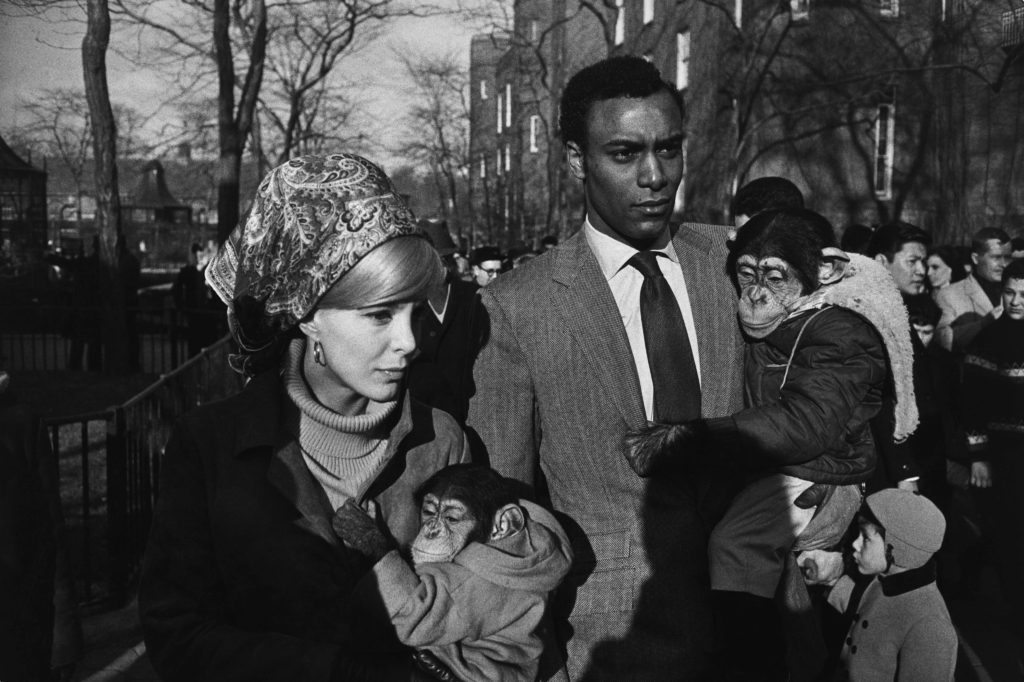
Central Park Zoo, a young interracial couple each holds a chimpanzee dressed in children’s clothes. Winogrand captures himself in this scene as well – his shadow falls over the man’s torso, reminding the viewers of just how close Winogrand got to his subjects. Taken during the height of the Civil Rights Movement, their mere public presence is very much a political statement. Interracial couples were taunted with the idea that their children would be monkey-like, casting a more serious political statement to the seeming levity of the dressed up chimpanzees. Certainly aware of this, Winogrand presents them in a moment of passing by him, and their implacable facial expressions give this image an ambiguous tone: there is no easy or singular political statement offered here. In this work, Winogrand removes the context, showing just enough of the moment that the viewer can only describe what they are seeing in the image. The racial tensions inherent in this image are in the background, and in so doing, Winogrand normalises what would have been a rare sight: an interracial couple in public, in addition to their well-dressed chimpanzees. For Winogrand, photography was about transforming the real world into a distinct image, disconnecting it from its narrative. Because he believed photography’s purpose wasn’t to tell a story, it was simply to exist, or perhaps, in this image, the right to exist.
Contemporary Photographer
http://www.mikehollman.com/galleries/architecture-i
Mike Hollman is a commercial photographer based in Auckland, New Zealand, Mike is a commercial photographer, specializing in:
- Architectural Photography
- Hotels & Resorts Photography
- Landscape Photography
- Travel Photography

Mike’s passion for photography is well recognized and awarded within the photographic industry both domestically and internationally. He is a Grand Master of Photography (GMNZIPP) with the New Zealand Institute of Professional Photography. In the past four years, Mike was selected to represent New Zealand at the World Photographic Cup and was a Finalist in 2013 & 2014.
Mike’s unique style of architectural photography, not only was well respected by his commercial clients worldwide, but also was named the 13 World’s Best Architectural Photographers in 2015 by the Interactive Design Institute in UK and the top 7 Architectural Photographers in 2013 by the [Framed] Award in USA.





Artist Archive Reference
 Originally from France, Ernest Baudoux born 1828 worked in Jersey from 1869 at 11 Craig Street and 51½, 56 and 59 New Street. In 1885 he was joined in business by his son, but two years later they sold out to John Stroud, a young photographer from London, who in turn sold his business, including many of Baudoux’s glass-plate negatives, to Albert Smith.
Originally from France, Ernest Baudoux born 1828 worked in Jersey from 1869 at 11 Craig Street and 51½, 56 and 59 New Street. In 1885 he was joined in business by his son, but two years later they sold out to John Stroud, a young photographer from London, who in turn sold his business, including many of Baudoux’s glass-plate negatives, to Albert Smith.
There are about 1385 photographers of Baudoux’s photographers in the archive, most of these or portraits of jersey families as this was his specialty.But he also could be classified as a documentary photographer, as his work includes expensive family houses at the time, and many other events, such as land being reclaimed etc. Many of his portraits exist in two versions, one of them retouched to hide facial blemishes and wrinkles. Baudoux also undertook photographic commissions of clients’ houses and, working with his sons, he photographed views of the island.

Baudoux’s was easily the most prolific Jersey studio. He seems to have drawn his clients mainly from the Jersey born and French speaking population. During his last year of operation he opened a branch establishment in Guernsey.La Société say that of a total of 3298 images attributed to the Albert Smith studio in their archive, they estimate that as many as 500 are in fact by Ernest Baudoux .Baudoux images are very collectable, and frequently appear for sale on on-line auction sites. In addition to the Societe Collection, there are two large collections of Jersey photographs and postcards in South Africa and the United States, to which Jerripedia has access. This has enabled us to build up a substantial gallery of Baudoux images, some of which are shown below, others being located on appropriate subject pages.
6. Photo Shoot Plan
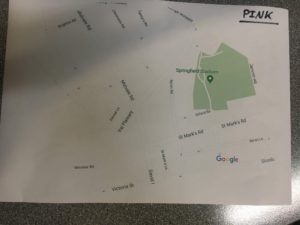
We were split into groups and allocated a sector of town each, my ground was given the pink section on the map which included things such as Springfield sport centre, the mason temple and various churches. We decided to look at the area on google maps before we went out on the shoot to get an idea of what we wanted to photograph.
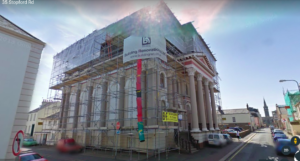
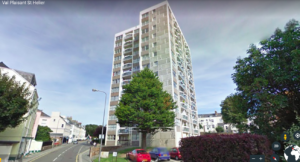
This tower block is currently under development, it could be an interesting subject and link to our project of the future of St Helier. It is also one of the tallest buildings in Town and sticks high above all the other block buildings which are all at the same level.
Concept: I want to explore the area I have been given and take inspiration form what I find and scenes I witness. I aim to show how the area currently looks and anything which shows how it might develop in the future.
Location: I will take photos in my allocated area of St. Helier, there are different areas that i have looked into on google earth which I defiantly want to take photos of but i will also wonder around the streets to see what captures my attention.
Lighting: I will use natural lighting whilst outside and depending on the environment inside I might use flash to illuminate any dark settings.
Brief history of St Helier
It is thought that the site of St Helier was settled at the time of the Roman control of Gaul.
The medieval hagiographies of Helier, the patron saint martyred in Jersey and after whom the parish and town are named, suggest a picture of a small fishing village on the dunes between the marshy land behind and the high-water mark
18th Century
Until the end of the 18th century, the town consisted chiefly of a string of houses, shops and warehouses stretching along the coastal dunes either side of the Church of St Heller.
19th Century
Military roads linking coastal defences around the island with St Helier harbour allowed farmers to exploit Jersey’s temperate micro-climate and use new fast sailing ships and then steamships to get their produce to the markets of London and Paris before the competition. This was the start of Jersey’s agricultural prosperity in the 19th century.
20th Century
In the 1960s, income from the Jersey States Lottery was used to excavate a two-lane road Tunnel under Fort Regent, enabling traffic from the harbour to the east coast towns to avoid a torturous route around the fort. About the same time, the Fort was converted into a major leisure facility and was linked to the town centre by a gondola cableway – closed and demolished in the 1990s.
21st Century
Liberation Square is now a focal point in the town – the former terminus of the Jersey railway housed the Jersey Tourism office until 2007.
5. Michelle Sank Research
Michelle Sank is a social demographic photographer who was born in Cape Town, South Africa and lived there until 1987. She takes photos which reflect human condition and can be seen as a style of documentary photography regarding social issues and cultural diversity. She captures, collects and re-tells her encounters with people in certain communities. She is well known for her work with the youth and has various series of photos on this topic. These photos have a sort of coming of age theme where the subjects are dealing with adolescent struggles and trying to find their own identity and place in the world. She allows her subjects to be completely themselves helping their personality show through n the images rather than adapting them to look ‘Normal’. I like the way the subjects look so comfortable and unaffected by the presence of a photographer yet there is also something unnerving about the photos due to how real they are despite being composed and set up.
In 2013 Michelle Sank visited and stayed in Jersey for 6 months working on the Archisle project and Insula. her collection features mainly staged portraits along with some landscape work to help provide context and setting to the collection. Insula is a response to nineteenth century portrait photographers who captured the wealth in the island. The images show the cultural geography of the island from the perspective of an outsider. The photos play around the topic of emotion, culture, politics, economics and island life. They were taken as part of the Archisle contemporary photography programme at the Societe Jersiase photo archive.
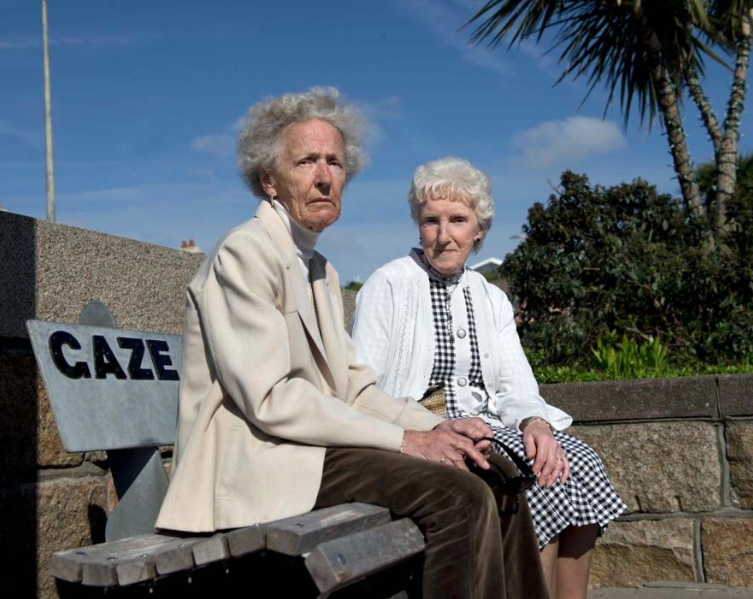
Technical: This photo has been taken using natural lighting, due to the harsh shadows, and bright colours it looks as though it was a sunny day. The shadows give the image high contrast which makes the minimal colours in the image pop. The background is slightly blurred which could means a medium aperture was used to subtly change the depth of field so that the camera focuses more the subject. A low sensitivity shutter speed has been used to capture a sharp and still image. The image has a slight cool tone which cancels out any orange tones from the strong sun light making it more of . colour accurate image.
Visual: The colours in this photograph are very simple, blue, green and various shades of brown. This makes us, the viewer focus in on the detail and texture in the image such as the lettering on the bench and the material of the ladies clothes. The composition of this image is interesting, although it looks a bit like a documentary style image of two old ladies sitting on a park bench we can tell some parts of the image have been set up. Firstly the subjects ere aware that they are being photographed and are looking directly at the camera, this subjects they had a conversation with the photographer. the photo has also been taken from a slightly low angle so we are looking up at the subjects. The women are sitting upright with their hands on their laps which looks slightly staged and unnatural but also helps to create a formal tone to the image. I think an interesting part of the composition which the photographer has considered is the word on the bench reading ‘gaze’. The subjects could be considered to be gazing at the camera, the one closest to us has a frown and the one further away is slightly smiling, this could be a coincidence but it also could have been set up by the photographer to create a contrasting mood to the image.
4. Dunham, Percy Research
In 1873 the Société Jersiaise was formed as a museum and library for all types of records, photos, monuments and buildings. A significant amount of their library is photographic, as a form of recording in a documentary style. Over the last 140 years they have accumulated over 100,000 photos of the island, especially in the late 19th early 20th century when photographers such as Percy Dunham.
there is very little information about Percival Dunham was before 1911 when he came to the island, so his birth marriage and baptism are unknown. He is known as Jersey’s first photojournalist and took over 1,000 photos during a very brief period (1913-14). He had a photography business at 57 bath street when he arrived in the island and had already taken photos for events such as the Battle Of Flowers. He worked for different local publishers (illustrated weekly and the morning news) and eventually The Evening Post who in the years leading up to the war had not used photographs in their papers. Before Dunham the only photos published in the local papers were portraits or promotional for advertisers. In 1914 he left the island to serve in the 1st world war as a gunner. He survived the war and returned to Jersey, where he had married Miss M Mourant at St Simon’s Church and lived until 1961.
His work has been desplayed in an exhibition at the jersey art centre which contained 40 images. Over 1,000 of his photographs are stored at the Société Jersiaise some of which can be viewed on their website. His photographs show Jersey life leading up to and after the first world war which was a huge even which shaped and effected the island. His style of photojournalism which captured people in a candid style was very new at the time which made his photos different and recognisable.
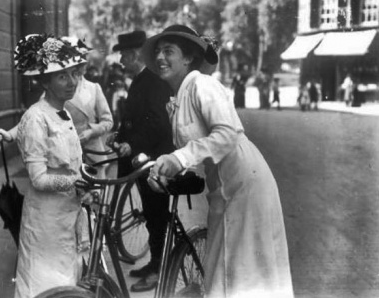
Technical: This photograph has been taken using natural lighting with a more wide angle lens. It has a short depth of field which creates a slightly blurred background bringing the focus to the two women in the foreground of the image.
Contextual: This photograph was probably taken in 1913-14 when Percival Dunham took most of his photos in jersey. In the image we can see Two women dressed up with big floral hats standing by their bicycles outside the Town Hall.
Visual: It is a black and white image with a high contrast helping to give the image life and character. The depth in the image helps to give it good 3D form with the details in the background helping to give context. The photo has an interesting composition with the subjects taking up 2/3of the frame which helps it look less stage and adds to the candid style.
Masterplan
Master planning is about making the connection between buildings, social settings, and their surrounding environments. A master plan includes analysis, recommendations, and proposals for a site’s population, economy, housing, transportation, community facilities, and land use. It is based on public input, surveys, planning initiatives, existing development, physical characteristics, and social and economic conditions
A massive part and the core reason for the success of St Helier is due to the work of master plans. It has played a major role in the development of architecture and economical development and therefore resulted in such projects as the land reclamation. This land reclamation is now one of the Jerseys major attraction areas with multiple leisure facilities, food outlets and accommodation. Masterplans has an important role of determining the shape of an urban environment. If the planning is not done well, it can lead to problems and no success for the future.


